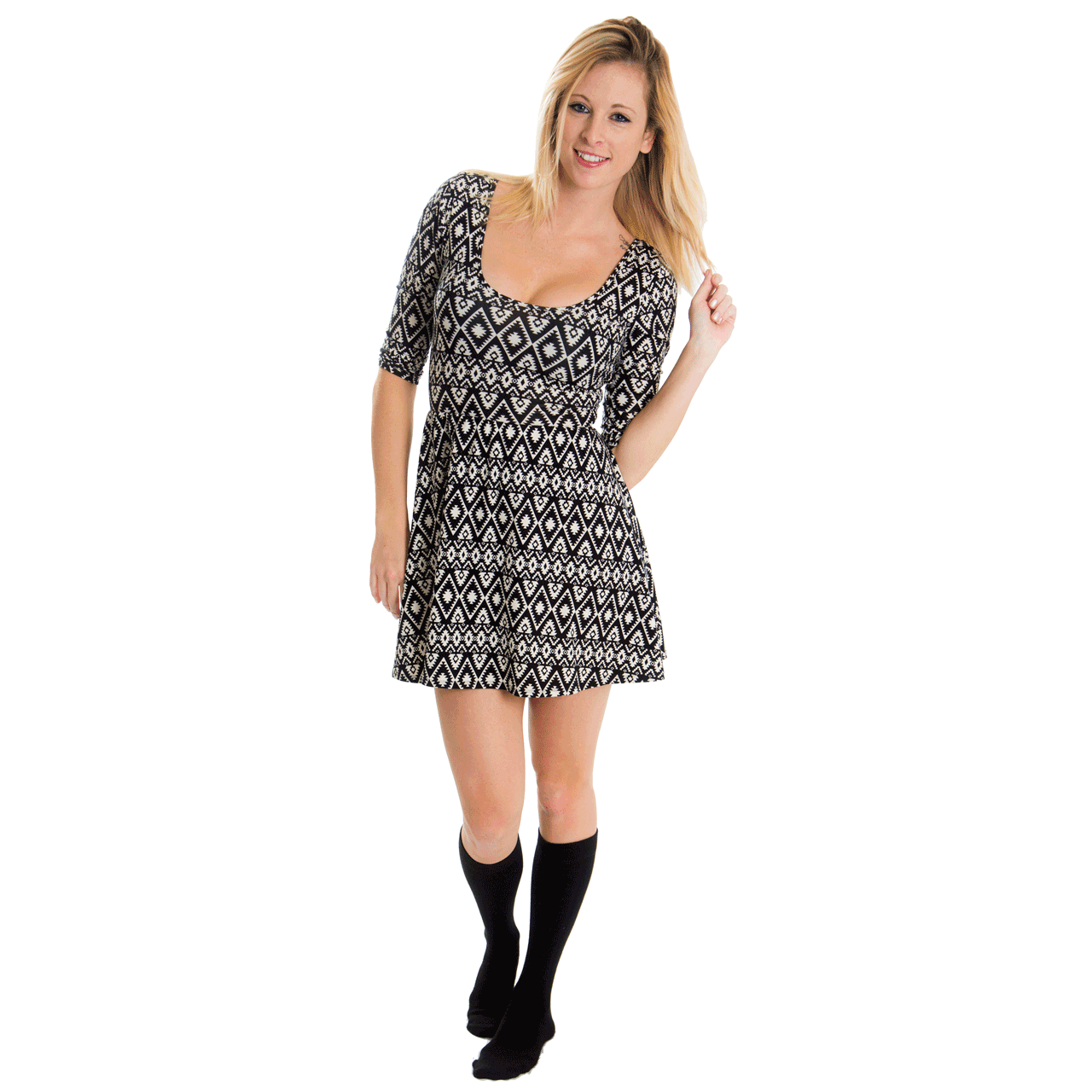The Importance of Sock Thickness
Have you ever stopped to consider the importance of sock thickness? It may not be something that crosses your mind on a daily basis, but the thickness of your socks can actually play a significant role in your overall comfort and foot health. In this article, we will delve into the world of sock thickness and explore its various impacts. So sit back, relax, and let's dive in!
Understanding Sock Thickness
Before we can fully appreciate the importance of sock thickness, we must first understand what it really means. When we talk about sock thickness, we are referring to the density and amount of padding in the footbed of the sock. This padding can vary from thin to thick, and different materials can also affect the overall thickness.
But why does sock thickness matter? Let's delve deeper into this topic to gain a better understanding.
Defining Sock Thickness
Sock thickness can be categorized into different levels, ranging from thin to thick. Thin socks offer minimal cushioning and are often preferred for activities that require a close-to-skin feel, like running or cycling. These socks are designed to provide a lightweight and breathable option, allowing for better moisture management and reducing the risk of blisters.
On the other hand, thick socks provide maximum cushioning and are perfect for hiking or other high-impact activities. These socks are designed to absorb shock and provide extra support, reducing the strain on your feet and joints. With their added padding, they offer enhanced comfort and protection, making them ideal for long hours of walking or standing.
Now that we understand the different levels of sock thickness, let's explore the factors that contribute to it.
The Role of Material in Sock Thickness
In addition to the actual padding, the material of the sock can also influence its thickness. Natural fibers, such as cotton, tend to have a thicker feel. The thickness of these socks provides extra warmth and cushioning, making them a popular choice for outdoor activities in chilly conditions.
On the other hand, synthetic materials like nylon or polyester can offer a thinner profile. These materials are often used in athletic socks, where a close fit and moisture-wicking properties are essential. The thinner profile allows for better breathability and reduces the bulkiness of the sock, providing a lightweight and streamlined feel.
When choosing the right sock thickness, it's important to consider both the material and the desired level of cushioning. Different activities and weather conditions may require different sock thicknesses to ensure optimal comfort and performance.
So, the next time you're shopping for socks, take a moment to consider the thickness that will best suit your needs. Whether you opt for thin socks for a sleek feel or thick socks for maximum cushioning, understanding sock thickness will help you make an informed decision and keep your feet happy and comfortable.
The Impact of Sock Thickness on Comfort
When it comes to comfort, sock thickness plays a vital role. The level of foot cushioning provided by thicker socks can significantly reduce the impact on your feet, minimizing the risk of discomfort or pain during prolonged activities. Imagine going on a long hike with thin socks - your feet would be begging for a break!
But let's delve deeper into the world of sock thickness and its impact on comfort. There are several factors to consider, including foot cushioning and temperature regulation.
How Thickness Affects Foot Cushioning
The extra padding in thicker socks enhances foot cushioning, acting as a shock absorber for your feet. This can be especially beneficial when engaging in high-impact activities, like running or participating in sports. The added support can help prevent fatigue and reduce the risk of injuries, allowing you to perform at your best.
Think about it this way: when you walk or run, your feet bear the brunt of the impact with each step. Thicker socks provide an additional layer of protection, distributing the force more evenly and reducing the strain on your feet. This can make a significant difference, especially during long periods of activity.
Temperature Regulation and Sock Thickness
Believe it or not, the thickness of your socks can also impact temperature regulation. Thinner socks tend to offer better breathability, allowing your feet to stay cool and ventilated. On the other hand, thicker socks can provide insulation, keeping your feet warm in colder conditions. It's important to consider the climate and activity when choosing the appropriate sock thickness.
Imagine you're going for a winter hike in the mountains. The temperature is freezing, and snow covers the ground. In this scenario, thicker socks would be a wise choice. They would provide the necessary insulation to keep your feet warm and protected from the cold. On the other hand, if you're going for a run on a hot summer day, thinner socks would be more suitable. They would allow your feet to breathe and prevent excessive sweating.
So, when it comes to sock thickness, it's not just about comfort - it's about finding the right balance between cushioning and temperature regulation. Consider the activity, climate, and personal preference when selecting the perfect pair of socks. Your feet will thank you!
Sock Thickness and Foot Health
When it comes to choosing the right socks, comfort is undoubtedly a top priority. However, we must not overlook the importance of foot health. Investing in the right sock thickness can go a long way in preventing common foot issues and maintaining the overall well-being of your feet.
But what exactly is the significance of sock thickness? Let's delve deeper into this topic to understand its impact on foot health.
Preventing Blisters and Sores
Thicker socks offer additional protection against blisters and sores, as they provide a barrier between your feet and the footwear. The extra cushioning helps to minimize friction and rubbing, reducing the likelihood of painful blisters forming. Whether you're planning a challenging hike or simply going for a long walk, opting for those thicker socks can make a world of difference.
Moreover, thicker socks can also provide relief for individuals with sensitive skin or those prone to developing blisters. By adding an extra layer of padding, these socks help to distribute pressure more evenly, reducing the risk of irritation and discomfort.
The Connection Between Sock Thickness and Foot Odor
Foot odor is a common concern, especially if you lead an active lifestyle. Interestingly, the thickness of your socks can play a role in combating this unpleasant problem. Thicker socks, with their increased cushioning and better moisture-wicking properties, can help keep your feet dry and odor-free for longer periods.
When you engage in physical activities or spend long hours on your feet, your feet tend to sweat. This moisture, when trapped against your skin, creates an ideal environment for bacteria to thrive, leading to foot odor. However, thicker socks can absorb more sweat and allow for better airflow, reducing the chances of bacterial growth and unpleasant odors.
Furthermore, the added cushioning in thicker socks can also help prevent foot fatigue and discomfort, allowing you to stay on your feet for longer without experiencing any unpleasant side effects.
So, the next time you're shopping for socks, consider the thickness and its impact on your foot health. Investing in the right sock thickness can provide you with not only enhanced comfort but also a range of benefits that contribute to the overall well-being of your feet. Take care of your feet, and they will take care of you!
Choosing the Right Sock Thickness
Now that we understand the significance of sock thickness, let's explore some factors to consider when selecting the perfect thickness for your needs.
Factors to Consider When Selecting Sock Thickness
When choosing the right sock thickness, there are a few things to keep in mind. Firstly, consider the intended activity. Will you be participating in a high-impact sport or engaging in a leisurely stroll? The level of cushioning required may vary accordingly. Secondly, think about the climate and temperature conditions. Cooler weather may call for thicker socks, while warmer climates may require a thinner and more breathable option.
Sock Thickness for Different Activities
Different activities demand different sock thicknesses. For intense sports or high-impact activities, opt for thicker socks to provide maximum support and cushioning. On the other hand, for activities that require a closer-to-skin feel, like yoga or Pilates, go for thinner socks that allow for better grip and flexibility.
The Future of Sock Thickness
As with any aspect of our lives, the world of sock thickness is constantly evolving. With advancements in technology and a growing focus on sustainability, there are exciting innovations on the horizon.
Innovations in Sock Design
Researchers and designers are continuously exploring new ways to improve sock thickness and its impact on comfort and performance. From specialized cushioning zones to cutting-edge materials, the future of sock design holds promise for even better foot support and an enhanced overall experience.
Sustainability and Sock Thickness
As the world becomes more conscious of environmental issues, the sock industry is also embracing sustainability. In the future, we can expect to see more eco-friendly materials and production processes that take into account the impact on our planet, without compromising on the quality or thickness of our beloved socks.





